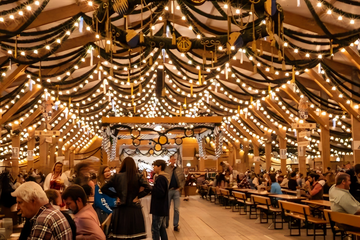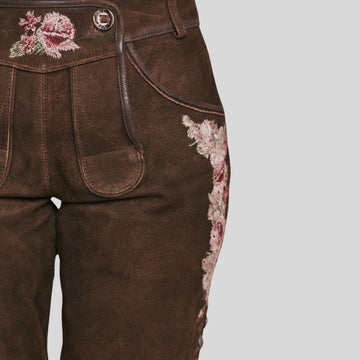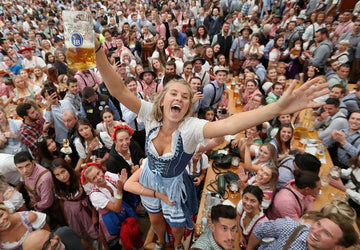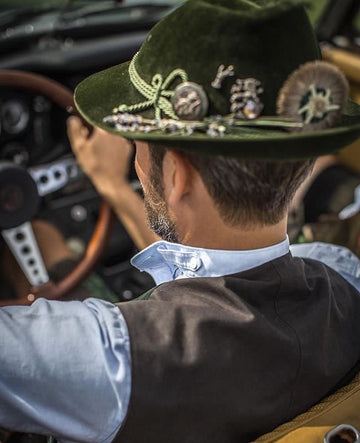Germany is known for its rich cultural heritage, and nothing exemplifies this more than its traditional clothing. From regional festivals like Oktoberfest to weddings and other special occasions, wearing authentic German clothing connects you with centuries-old customs. Whether you are attending Oktoberfest in Munich or participating in a local German festival elsewhere, your outfit speaks volumes about your appreciation for the culture. In this blog, we’ll take a deep dive into the significance of the Oktoberfest Costume, the allure of traditional German clothing, and why authentic Bavarian lederhosen are the ultimate wardrobe investment for festivals and beyond.
The Role of Clothing in German Festivals
Festivals in Germany are grand, colorful, and deeply rooted in tradition. Events like Oktoberfest, Frühlingsfest (Spring Festival), and local harvest festivals provide not only an opportunity to enjoy food and drink but also to showcase one’s cultural pride through traditional clothing. The sight of men in lederhosen and women in dirndls is not just reserved for Oktoberfest—it is a common practice during any special occasion across Bavaria and other regions of Germany.
The type of German Clothing worn during festivals like Oktoberfest reflects regional styles and centuries of craftsmanship. These outfits have evolved over time but remain a strong symbol of cultural identity. Wearing an Oktoberfest costume is more than just about aesthetics; it is about embracing the values of the past and ensuring that those traditions continue.
The Origin and Evolution of the Oktoberfest Costume
Oktoberfest, celebrated annually in Munich, is the largest beer festival in the world. But beyond the beer tents and pretzels, Oktoberfest is also renowned for its distinct and traditional costumes. The Oktoberfest costume has its roots in the everyday attire worn by Bavarian peasants. For men, this means lederhosen—knee-length leather breeches, while women traditionally wear dirndls—an apron dress with a fitted bodice and blouse.
Lederhosen: From Workwear to Festival Attire
The history of Authentic Bavarian Lederhosen dates back to the 18th century when they were worn by farmers and hunters in the Alpine regions. The tough, durable leather used in lederhosen made them ideal for physical labor, while their shorter length allowed for freedom of movement. Over time, what was once practical workwear became a symbol of Bavarian identity and pride. Today, wearing lederhosen during Oktoberfest and other festivals pays homage to this rich history.
Lederhosen vary in length, with shorter styles typically worn for casual events and knee-length styles reserved for more formal occasions. Authentic Bavarian lederhosen are often made from deerskin, known for its softness and durability, though cowhide is also common. High-quality lederhosen are distinguished by intricate embroidery and hand-stitched details that reflect traditional Bavarian craftsmanship.
Dirndl: A Celebration of Femininity
For women, the dirndl has an equally storied past. Originally worn by Alpine peasant women as a work dress, the dirndl has since evolved into a fashionable and beloved Oktoberfest costume. Comprising a bodice, blouse, skirt, and apron, the dirndl is both practical and stylish. Today, dirndls come in various colors, fabrics, and lengths, allowing women to express their individual style while adhering to tradition.
Like lederhosen, the dirndl is more than just a costume. It symbolizes regional pride and is often passed down through generations as a family heirloom. Modern designers have reimagined the dirndl, incorporating contemporary patterns and materials, but the classic silhouette and significance remain the same.
Choosing the Perfect Oktoberfest Costume

Selecting the right Oktoberfest costume is an important decision, especially if you want to honor the tradition authentically. For men, choosing between different types of lederhosen is the first step. Shorter lederhosen are ideal for more casual settings, while knee-length styles are better suited for more formal events. The type of leather also matters. Authentic Bavarian lederhosen are usually crafted from deerskin or cowhide. Deerskin is more supple and comfortable, while cowhide is more affordable but equally durable.
For women, the dirndl offers more variety. When choosing a dirndl, consider the occasion, as longer dirndls are more formal, while shorter styles are perfect for a lively Oktoberfest. The color and pattern can also be personalized to suit your tastes, but traditional floral or checkered patterns are most common.
In addition to the clothing itself, accessories are an essential part of the Oktoberfest costume. Men often wear traditional hats called Tyrolean hats, which are adorned with feathers or pins. Women can accessorize their dirndls with decorative aprons, jewelry, and traditional shoes known as "Trachten shoes."
What Makes German Clothing Unique?
One of the most compelling aspects of German clothing is its attention to detail and the pride that goes into its craftsmanship. Whether it’s the stitching on lederhosen or the pleating of a dirndl’s apron, every element of traditional German clothing is meticulously crafted to reflect the culture’s deep-rooted heritage.
The materials used are also of high quality. For example, the leather in authentic Bavarian lederhosen is often sourced locally, ensuring not only durability but also a commitment to sustainable and ethical practices. The fabrics used in dirndls range from cotton and linen for casual wear to silk and satin for more formal occasions. In addition, much of the German clothing worn for festivals is handmade by artisans who have passed down their techniques for generations.
Traditional German outfits have also found their way into modern fashion, as designers reinterpret these classic styles for contemporary wear. It’s not uncommon to see elements of lederhosen or dirndl-inspired designs on global fashion runways, highlighting the timeless appeal of German clothing.
Authentic Bavarian Lederhosen: Why Quality Matters

If you’re attending Oktoberfest or any German festival, it’s crucial to invest in authentic Bavarian lederhosen. While cheaper, mass-produced versions are widely available, they lack the quality, durability, and authenticity of genuine lederhosen. Authentic Bavarian lederhosen are handmade by skilled artisans who use traditional techniques, resulting in a garment that not only looks better but also lasts longer.
The leather used in genuine lederhosen is of the highest quality, ensuring that they age beautifully and become even more comfortable over time. The intricate embroidery, often depicting Alpine symbols like edelweiss or deer, is hand-stitched, adding a personal and unique touch to each pair. When you invest in authentic Bavarian lederhosen, you’re not just buying a costume—you’re purchasing a piece of history and supporting centuries-old craftsmanship.
Moreover, real lederhosen offer unparalleled comfort and durability. They mold to your body over time, ensuring a perfect fit. While cheaper alternatives may look similar at first glance, they often fall apart after a few wears, whereas authentic Bavarian lederhosen are built to last for years, if not decades.
Modern Uses for Authentic Bavarian Lederhosen
While authentic Bavarian lederhosen are a must-have for Oktoberfest, they can be worn on various other occasions. Many men wear lederhosen to weddings, local festivals, and even casual gatherings. The versatility of lederhosen makes them a valuable addition to any wardrobe.
For example, you can pair your lederhosen with a casual checkered shirt and sneakers for a laid-back look, or dress them up with a vest and polished shoes for a more formal event. The adaptability of authentic Bavarian lederhosen is part of what makes them so appealing.
Women’s dirndls are equally versatile, with different lengths and fabrics suited for various events. A more elaborate dirndl with silk fabrics and detailed embroidery is perfect for a wedding or formal event, while a simpler cotton version is ideal for Oktoberfest or a casual day out.
Maintaining Your German Clothing

To ensure your Oktoberfest costume lasts for many festivals to come, proper care is essential. Authentic Bavarian lederhosen require special attention, as leather can be sensitive to moisture and extreme temperatures. After wearing your lederhosen, it’s important to let them air out and store them in a dry, cool place. Avoid washing leather, as this can damage the material; instead, use a damp cloth to wipe away any dirt or stains.
For dirndls, washing instructions will vary based on the fabric. Cotton dirndls can usually be machine-washed, but more delicate fabrics like silk or satin should be dry-cleaned to maintain their integrity.
By properly caring for your German clothing, you’ll not only extend its lifespan but also preserve the quality and craftsmanship that make these garments so special.
Conclusion: The Timeless Appeal of German Clothing
Whether you’re preparing for Oktoberfest or another special event, the right Oktoberfest costume ensures you’re celebrating in style. From the durability and authenticity of authentic Bavarian lederhosen to the feminine elegance of a dirndl, German clothing is not only steeped in history but also offers timeless appeal. By investing in high-quality, handcrafted pieces, you’re not just buying an outfit—you’re embracing a centuries-old tradition that continues to thrive today.
So next time you’re getting ready for a festival, remember: there’s no substitute for authenticity when it comes to German clothing. Whether it’s a pair of lederhosen that will last you a lifetime or a dirndl that reflects both tradition and modern style, you’re sure to turn heads while paying homage to one




